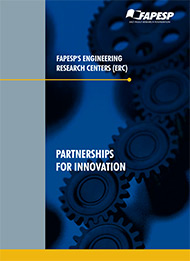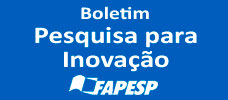USP presents seven new research centers directly linked to the Rector’s Office

29 de maio de 2024
By Julia Moióli | Agência FAPESP – In a ceremony held on April 8th, the University of São Paulo (USP) officially created seven new research centers whose mission is to develop fundamental or applied research focused on specific topics in a multidisciplinary manner. Among them are the Center for Carbon Research in Tropical Agriculture (CCARBON) and the Research Center for Greenhouse Gas Innovation (RCGI) – respectively a FAPESP Research, Innovation and Dissemination Center (RIDC) and an Engineering Research Center (ERC), created by the Foundation in partnership with Shell. Now directly linked to the Rector’s Office, they now have the same structure and gain agility and autonomy in carrying out research and structuring agreements.
“With this model, it will be possible to carry out quality research that makes important contributions in an agile manner,” said Carlos Gilberto Carlotti Junior, Rector of USP, during the event. “I believe that, in the coming months and years, great research and collaborations will emerge from these centers, which will also serve as a model for other universities in Brazil, allowing research, teaching and extension to be much more closely linked to the needs of society and to major national and international priorities.”
With the mission of concentrating teaching, research and extension activities in an inter-institutional manner within the university, bringing together highly competent professionals, the Centers of Studies of Sustainability of the Amazon Rainforest (CEAS), Carbon in Tropical Agriculture (CCARBON), Sustainable Tropical Agriculture (STAC), Greenhouse Gases (RCGI), Convergent Technologies for Precision Oncology (C2PO), Artificial Intelligence and Machine Learning (CeIAAM) and the Observatory of Brazilian Institutions (COI) are dedicated to today’s most relevant topics.
The work of all the groups is linked to the United Nations (UN) 2030 Agenda, which consists of 17 Sustainable Development Goals.
Support from FAPESP
Marco Antonio Zago, president of FAPESP, who was present at the ceremony, said he was pleased to see that some of these centers have their origins within the Foundation. According to him, this shows the institution’s potential not only as a source of funding for science in the state of São Paulo but also as a “breeding ground for major projects and links between the university and society.”
“The world has changed a lot, and the challenge for universities is to seek solutions based on scientific knowledge to improve society and public policies,” said Zago. “Not with an eye on the past, but based on new movements – and one of USP’s strategies for understanding mission areas is precisely to organize its valuable human capital in the form of interdisciplinary centers with specific, very well-defined focuses. They all deal with highly relevant issues in a global and national context.”
According to Zago, all the centers will be able to count on FAPESP resources to carry out their missions.
The event was also attended by authorities such as Arnaldo Hossepian Salles Lima Junior, Director-President of the USP Medical School Foundation; Carlos André Bulhões Mendes, Rector of the Federal University of Rio Grande do Sul (UFRGS); Cristina Balestrin, Cabinet Advisor to the State Department of Health, representing Eleuses Vieira de Paiva, Secretary of Health; Guilherme Campos, Federal Superintendent in São Paulo state of the Ministry of Agriculture, Livestock and Supply (MAPA); José Sebastião dos Santos, Coordinator of the USP Research Centers; Júlio César Dalla Mora Esquerdo, Head of Research at EMBRAPA Digital Agriculture; Luiz Fernando Lima Reis, Director of Research at Hospital Sírio-Libanês, representing Denise Alves da Silva Jafet, Director of the institution; Maria Arminda do Nascimento Arruda, Vice Rector of USP; Marisa Maia de Barros, Undersecretary for Energy and Mining at the São Paulo State Department of the Environment, Infrastructure and Logistics; Rosana Emília Gaspar, President of the State Council for Sustainable Food and Nutritional Security (CONSEA); Stanley Robson de Medeiros Oliveira, Head of EMBRAPA Digital Agriculture; and Wieneke Vullings, Consul General of the Netherlands.
Research and perspectives
During the ceremony, the coordinators of the USP Research Centers presented their groups’ missions, projects, and perspectives. See below for more details on their lines of work.
Center of Studies of Sustainability of the Amazon Rainforest (CEAS)
In collaboration with other universities in São Paulo and research institutions in the Amazon region, CEAS aims to develop sustainable strategies for the Amazon, a region that plays a key role in regional and local climate stability and is home to indigenous communities that depend on it.
“We want to promote the production, integration and dissemination of science through inter- and transdisciplinary approaches related to teaching, research, and culture and extension for the sustainable development of the region, taking into account its biodiversity, the complexity of physical, chemical and biological processes, and its ethnic and population diversity, as well as socio-economic issues,” explained Paulo Eduardo Artaxo Netto, professor at the Physics Institute (IF-USP) and coordinator of CEAS.
Center for Carbon Research in Tropical Agriculture (CCARBON)
CCARBON’s challenge is to develop, propose and apply innovative agricultural, livestock and forestry techniques, practices and solutions that not only reduce greenhouse gas emissions but also remove them through carbon sequestration, thereby helping to mitigate climate risks.
“Our focus is on Brazil’s biomes, but we’re convinced that the country plays a central role and can impact the panorama in a more global way,” said Carlos Eduardo Pellegrino Cerri, professor at the Luiz de Queiroz College of Agriculture (ESALQ-USP) and coordinator of CCARBON.
Sustainable Tropical Agriculture Center (STAC)
“Our mission is to articulate strategic and innovative solutions to promote sustainable tropical agriculture, with a focus on the well-being of society and the health of the environment, and the values of ethics, professionalism, transparency, excellence and scientific rigor,” said Durval Dourado Neto, professor at ESALQ-USP, about STAC.
Neto presented some of his group’s research lines, including the domestication of macauba (Acrocomia aculeata); the Green Brazil Seal, in association with the Secretariat of the Green Economy, Decarbonization and Bioindustry (SEV) of the Ministry of Development, Industry, Trade and Services (MDIC); irrigated agriculture and food security, in collaboration with MAPA; rural connectivity, with MAPA and the Ministry of Communications (MCom); and restoration of degraded landscapes, with the UN.
Research Center for Greenhouse Gas Innovation (RCGI)
“Our focus is on developing new technologies aimed at combating climate change, making it possible to mitigate greenhouse gas emissions,” explained Julio Romano Meneghini, professor at the Engineering School (POLI-USP) and coordinator of the RCGI.
Examples include technologies for capturing, storing and using carbon, producing hydrogen from ethanol, and generating energy from biological sources.
According to the professor, the RCGI also aims to help Brazil meet its Nationally Determined Contributions (NDCs) to combat climate change.
Center for Research and Convergent Technologies in Precision Oncology (C2PO)
Faced with the challenge of treating cancer, a disease that according to the International Agency for Research on Cancer (IARC) will be the biggest global public health problem by the middle of this century, C2PO proposes to bring the USP community together around an action agenda focused on more accurate diagnosis and treatment.
“The mission of our center is to articulate research projects that meet the needs we see on a daily basis in the hospital and impact the way we diagnose and treat cancer,” said Roger Chammas, a professor at the Medical School (FM-USP), in an interview with Agência FAPESP.
The group’s projects include predictive response markers, cancer genomics, advanced nanotechnology therapies and artificial intelligence.
Center for Research on Artificial Intelligence and Machine Learning (CeIAAM)
CeIAAM’s mission is to support teaching, research, innovation, culture and extension activities related to all aspects of artificial intelligence and machine learning by providing shared platforms and resources, transferring knowledge and technology, disseminating information and training professionals.
“Our lines of research include processing the Portuguese language, indigenous languages, ocean data forecasting and diagnostic support in health,” Fabio Gagliardi Cozman, a researcher at USP’s Innovation Center (InovaUSP) and coordinator of CeIAAM, told Agência FAPESP. “We also work with scientific dissemination, debates and round tables.”
“The area involves the application of this technology in all aspects and how society can best receive and process it, hence the attention it has attracted.”
Brazilian Institutions Observatory Research Center (COI)
The main objective of the IOC, created as an initiative led by Professors Ricardo Lewandowski, Minister of Justice and Public Security, and Maria Arminda do Nascimento Arruda, is to analyze the improvement and development of Brazilian institutions in the midst of the great transformations of recent decades, such as the advance of the internet, the deepening of inequalities and the struggle for greater social and economic balance.
“Conceived as a space for reflection, analysis and dialogue between the university and society, the IOC has a forward-looking, critical and propositional character and invests in the development of interdisciplinary research to think about ways and discuss solutions for improving political, economic and social life,” Arruda said during the event.
To this end, it has several working groups with specific focuses, such as gender, sustainability, economics, democracy and health.
A first study by the center measured gender inequality at USP and in Brazilian science, based on a panorama of the distribution of men and women within the university over the last 20 years, providing subsidies for the formulation of policies aimed at equity.



